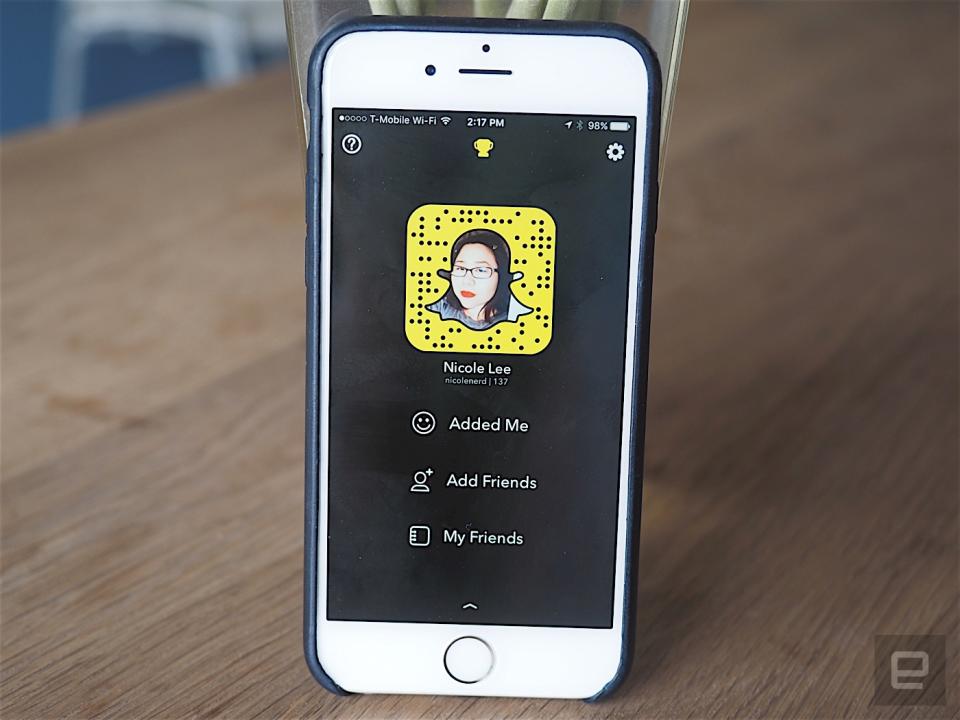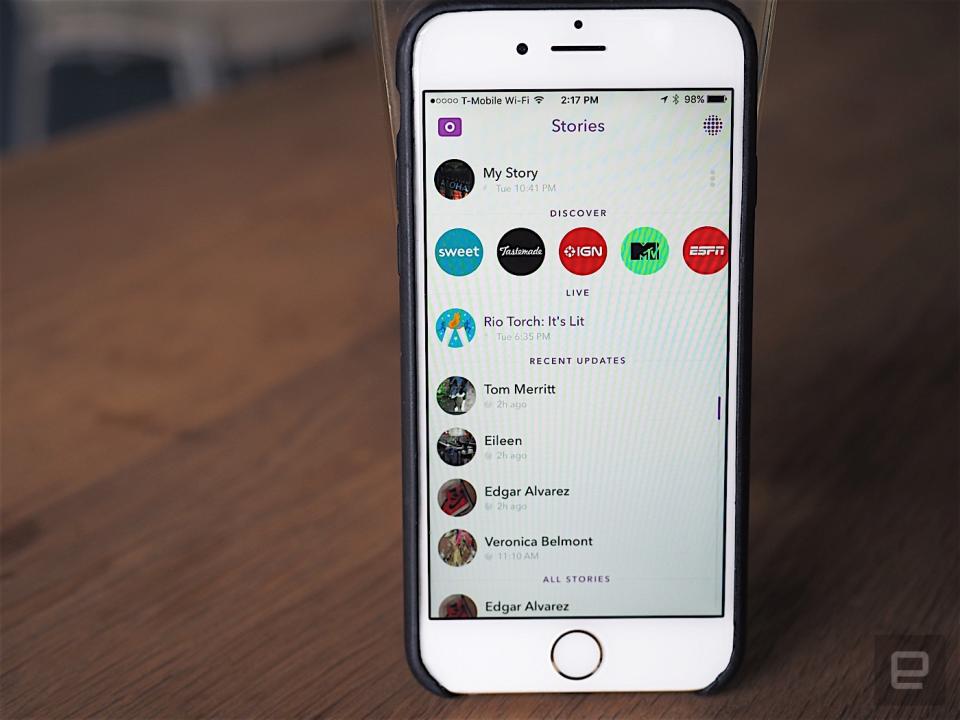This thirtysomething finally figured out Snapchat
Which is how you know it's not cool anymore.

Until a few weeks ago, I didn't understand Snapchat. That's odd, because I generally like to think of myself as pretty internet savvy. I've been one of the first to join every new network since the days of Orkut, and I adopted Twitter early enough to get my first name for a handle. But despite Snapchat's popularity, I couldn't work out how to use it. I resigned myself to the idea that as someone in her late thirties, I was just out of touch with Snapchat's target younger demographic. But after spending several weeks playing around with it, I'm hooked.
It's not like I haven't tried to figure it out before. I downloaded the app back in 2012, when Snapchat first took the world by storm. In its early days as a pure messaging service, it was often derisively known as a sexting app for teens. Feeling curious, I launched it, hoping to understand what the buzz was about. After adding a couple of friends and tapping a few buttons, I remained stumped. So wait, this was a messaging app, but only for photos? And the messages disappear after you read them? I didn't get the appeal. Why would I use this if I already had Hangouts and text messages? So I shook my head and left it aside.
Then it started to evolve. Snapchat added the Stories feature, which meant you could make your 24-hour photos and videos public. Instead of private messages sent to friends, you could now create an ephemeral feed of your life. It introduced fun extras like selfie lenses, face swaps and geofilters. Snapchat also added a Discover section, where publishers and brands could highlight stories of events or trending topics. CEO Evan Spiegel said that the service has over 100 million daily active users who watch 8 billion videos a day. Even the White House has started to use Snapchat.

A few weeks ago, Snapchat made headlines, thanks to an ill-advised Bob Marley blackface filter. In the process of finding out about it, several of my (admittedly thirtysomething) friends discovered the face-swap feature and started fooling around with it, posting the often-disturbing results on Instagram. Buoyed by curiosity, I decided to try it once more. And again, I hit a wall. Snapchat's user interface was impenetrable. How do I add these filters? Do I apply them before or after I take the photo? How do I find out if my friends are on here? How do I add all of those emojis and colored text? Wait, I can't leave comments on these stories? How do I use this to engage with an audience? Oh, hell no, it only recognizes vertical videos? And why can't I use a photo from my Camera Roll as a Snapchat profile? And what the hell is a Snapchat score?
This time, though, I was determined to crack the Snapchat code. I started to take photos, tapping around the different icons to see what would happen. I learned how to use filters, reposition text and add stickers through trial and error. I discovered you could use those different selfie lenses only with the front-facing camera (which makes sense, but it wasn't clearly indicated as such). I figured out that the best way to let your friends know you've taken a snap is to not only publish it to your story but also send them a copy. This also does wonders for your Snapchat score, which seems to go up every time you send a snap.
The more I use Snapchat, the more I appreciate it. Unlike with Instagram, the photos and videos I capture through Snapchat are spontaneous; because I can't dig through my Camera Roll and pick the best ones, the photos and videos I take are more candid. I often mess up and take them again, but I ultimately am not as fussy, because I know the images and clips will only be there for 24 hours.

As a result, I end up posting weird, random photos and videos that I'm unlikely to publish elsewhere. They include photos of my bruised knees after a deep tissue massage, a video where I talk about my first yoga class and a little Snapchat story about how I made homemade chicken pho. I did that last one because I didn't want to spam my Instagram feed with photos of a step-by-step cooking process, whereas that constant stream of pictures felt more at home on Snapchat.
I basically treated my Snapchat story like a personal photo and video journal, except it'd disappear after 24 hours so it wasn't a big deal if only a few people saw it. Even though my Snapchat is public, then, it's really only public to the people who happen to see it. It's a weird little conceit, but that makes me more willing to be my authentic self. I can be more experimental in how I portray myself. I can be a little more off the cuff. I can try out dumb jokes without fearing that people will laugh at me instead of with me. It's like performance theater.
I also enjoy using Snapchat to catch up with what my friends are doing. Because snaps only last for 24 hours, I'm encouraged to check my Snapchat constantly for any updates. I find that the photos and videos that my friends share on Snapchat tend to veer toward the personal. They're sharing video clips of their vacations, their conversations with their dogs and their nights out at band practice. They're sharing these intimate moments that are maybe not important enough to showcase on Facebook or Instagram but are perfectly acceptable in the judgment-free zone that is Snapchat.

And that's why I think Snapchat is so attractive to me. Because there's no way to leave comments aside from messaging the person directly (and even then you can have it so you can only accept messages from friends), you can publish whatever you like without fearing that you'll get harassed or called nasty names. Few other social networks allow this sort of freedom, and as someone who often gets harassed on other social venues, the ephemeral nature of Snapchat feels freeing.
I still think Snapchat's UI is horrendous. It's difficult to navigate, and figuring out how to do anything takes effort. It's the sort of thing that's perhaps best shown in person, which might explain why Snapchat is more popular with teens: They can show one another how to use it on their phones. It also might explain why Snapchat can be so challenging for adults, who are perhaps accustomed to more-intuitive interfaces. It makes me wonder if Snapchat's UI is purposefully obtuse so as to stave off the adult invasion.
Yet the adult invasion is coming. As I mentioned, brands have discovered Snapchat, and so has mainstream media. Worse still, old farts like me are beginning to use it more frequently. That's how you know Snapchat is slowly losing its cool. And just when I was finally getting into it.
